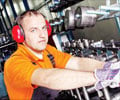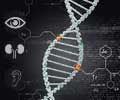- Scientists from the Massachusetts Eye and Ear Center have identified key cells present in the human ear.
- These LDR5+ cells are capable of getting converted into hair cells upon treatment with specific drug combinations.
- The regeneration of these hair cells could reverse hearing loss, providing possible therapeutic advancements.
Small sensory cells called hair cells in the ear aid in our ability to hear. They convert the sound vibrations into electrical signals that travel through the nerves to the brain. When these hair cells are damaged due to medication, noise, advanced age or even injury, it leads to profound hearing loss. Humans cannot regrow these cells; 5 % of the population suffer from hearing loss due to this reason. Advancements in medical science have now shown that there could be a potential form of therapy to reverse this condition. In a study published in the journal Cell Reports, scientists describe a method to convert inner ear cells into hair cells, thus providing a possible solution to certain forms of hearing loss.
A research team from Massachusetts Institute of Technology, Massachusetts Eye and Ear and Brigham and Women's Hospital has found that LGR5+ cells could be
- Increased in number- a process known as cell augmentation
- Converted into hair cells
The Director of the Tillotson Cell Biology Unit at Massachusetts Eye and Ear, Dr. Albert Edge said that the scientists were able to show that increasing the expression of LGR5-expressing cells and inducing them to yield hair cells could soon be an effective means of therapy for hearing loss.
Stem Cells in the Ear
The current study to augment the LGR5 cells originated from an earlier study conducted by the same scientists that showed the presence of stem cells in the ear. In the previous study, the scientists found that- Certain cells identified in the ear produced a protein called LGR5.
- The same cells were also found in the intestinal stem cells and were involved in the replacement of the intestinal cells every eight days.
- The ability of these cells to regenerate new intestinal cells was studied along with their possible ability to regenerate hair cells.
- The scientists were successful in inducing these cells (stimulated by the use of specific drugs) to grow into hair cells in animal studies through the Wnt pathway.
- The LGR5+ cells were extracted from the inner ear of mice.
- These cells were then treated to certain combination of drugs as well as growth factors to make them multiply.
- After the cells increased in number, they were treated to another combination of drugs which induced them into developing into hair cells.
Dr. Edge further stated that the study could be used to repair critical damages to the ear and that the clues provided by this study could be used to improve drug therapy for hearing loss.
Hearing Loss and Its Enormity
Hearing is a vital means of communication among humans; hence the loss of hearing, especially among the elderly due to loss of hair cells, is a difficult aspect to come to terms with. It alienates the elderly as they begin to restrict their social interactions, with feelings of loneliness and despair setting in. Hearing loss is prevalent among children as well, reinforcing the urgency to address the problem.According to data provided by the Centers for Disease Control and Prevention (CDC) in 2007, there were 36 million American adults who suffered from hearing loss. Among children, CDC estimates suggest that for every 1000 babies, two to three have a detectable hearing loss, which translates into difficulties in cognitive development, speech, language and social behavior.
References:
- Hair Cell Regeneration and Hearing Loss - (https://report.nih.gov/NIHfactsheets/ViewFactSheet.aspx?csid=94)
- Noise-Induced Hearing Loss - (https://www.nidcd.nih.gov/health/noise-induced-hearing-loss)
Source-Medindia















